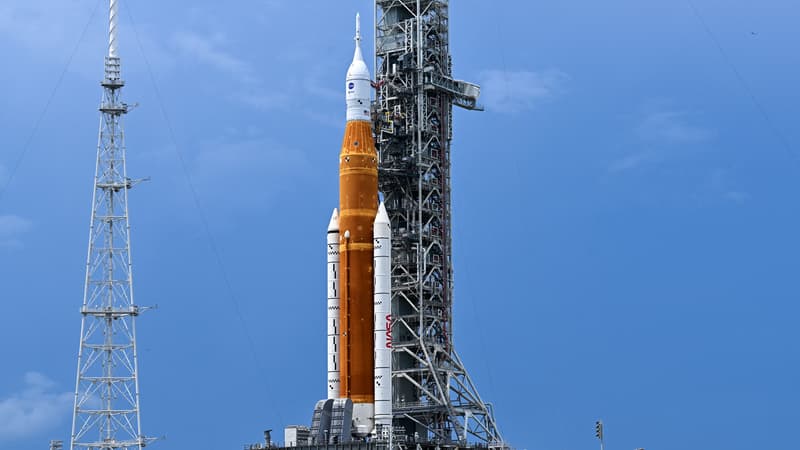NASA’s new giant SLS rocket is back at its launch pad in Florida for another blastoff attempt to the Moon in ten days, to mark the grand start of America’s new flagship Artemis program. After two failed launches this summer due to technical problems, the rocket had to be returned to its assembly building to protect it from a hurricane. NASA took the opportunity to recharge the batteries of many elements of the rocket, including those of certain mini scientific satellites on board.
A test mission with no astronaut on board
The mile-long trip from the Assembly Building to Kennedy Space Center’s Launch Pad 39B took about nine hours. The operation consisted of moving the rocket (98 meters high) on a gigantic platform, rolling very gently to avoid vibrations as much as possible. He arrived at his destination at 8:30 am local time.
The Artemis 1 test mission, without an astronaut on board, will mark the first flight of the main American program back to the Moon, whose purpose will be to carry the first woman and the first person of color. This will be the first flight of the SLS (Space Launch System), a heavy launch vehicle developed by NASA for more than a decade.
The new takeoff attempt is scheduled for the night of November 13 to 14, seven minutes after midnight local time (04:07 GMT). The firing window lasts a little over an hour when necessary.
Establishing a human presence on the Moon… before going to Mars
If launched successfully on that day, the mission will last just over 25 days, with a landing in the Pacific Ocean on December 9. The objective is, in particular, to verify that the Orion capsule, on top of the rocket, is safe to transport astronauts in the future. It will be propelled up to 64,000 km beyond the Moon, without landing there, but venturing farther than any previous habitable spacecraft.
On its return to the Earth’s atmosphere, its thermal shield must withstand a speed close to 40,000 km/h and a temperature half that of the Sun’s surface. Two alternative dates have been set for takeoff, 16 and 19 november.
The last time men went to the Moon dates back to 1972. The Artemis program should allow NASA this time to establish a lasting human presence there, in particular by building a space station in orbit around the Moon. For the US space agency, this is a step to test all the technologies necessary for a future trip to Mars.
Source: BFM TV


